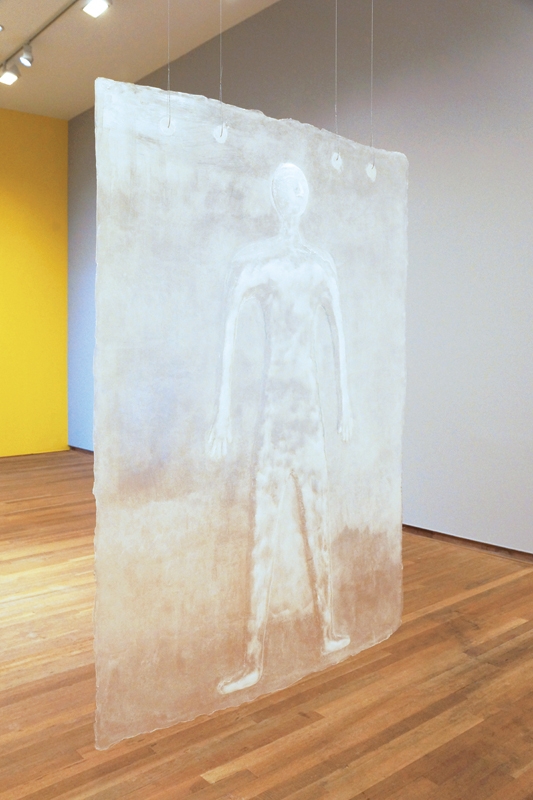Allow me to introduce Rodrigo Hernández with an anecdote: walking down the street one day in Oaxaca City, he had us pause to admire the lettering on a sign in a store window in which the first part had been done by a professional painter but the second part, presumably added later, had been done by an amateur who sought to imitate the professional, but with winsomely wonky results. It was precisely that second part, and the inimitable uniqueness of each letter that composed it, that so charmed the artist.
For all its simplicity, this anecdote is incredibly telling about Hernández’s interests and his approach to making art. An adept and lover of the handmade, the Mexican, currently Basel-based, is driven by a desire to reduce artmaking to its most fundamental, if primeval, components, which for him have a great deal to do with drawing, sculpture, space and the relation between the three (even if what he does also occasionally includes collage and painting). This reduction is not just limited to form, but also to content. When not asking basic questions like a true plastician through the works themselves (eg, what is a drawing? A sculpture?), Hernández asks them literarily, such as with the title of an artist book published on the occasion of his 2014 solo at the Bonnefantenmuseum in Maastricht, What is the moon? On a more formal level, the anonymous, primitivistic figures he depicts, invariably portrayed singly in large, open spaces, in graphite, paint and three-dimensions, border on stick-figure quality, while his palette is dominated by mostly uninflected primary colours. To date his most complex material is probably polyurethane, deployed to create a two-dimensional, quasi-stick-figure sculpture – otherwise, his formal vocabulary consists of graphite, paper, rice paper, oil on wood, plaster, papier mâché and other basic art stuffs, and as such, upon first glance, would seem to be markedly out of step with the current moment.
However, despite all appearances, this work is not naive. In the richest and most expanded sense of the cliché, it is ‘disarmingly simple’, in that it seeks to disarm the viewer through the immediacy of the handmade, the elementary quality of what is portrayed as well as materials used to do so, and the wide open, highly articulated spatial configurations that characterise his installations. Indeed, deeply human, the world that Hernández’s work portrays is an idealised world, blessedly devoid of the surfeit of information, maniacal hyperactivity and tempestuous conundrums of the twenty-first century. Dreaming more than it seeks to reflect, it reflects through dreaming, as if its very lack indicated precisely what was missing. And it is this ability to dream about and reflect on the world in such refreshingly essential terms that makes this work so compelling.
Presently in Basel on a residency, Rodrigo Hernández attended the Jan Van Eyck Academie in Maastricht and prior to that the Kunstakademie Karlsruhe. This year Hernández has solo shows at Kim?, Riga, and Museo Universitario del Chopo, Mexico City, and will participate in the Bienal de las Fronteras, Mexico City. Selected by Chris Sharp, contributing editor, ArtReview.
Read all of our 2015 FutureGreats profiles
This article was first published in the March 2015 issue.
